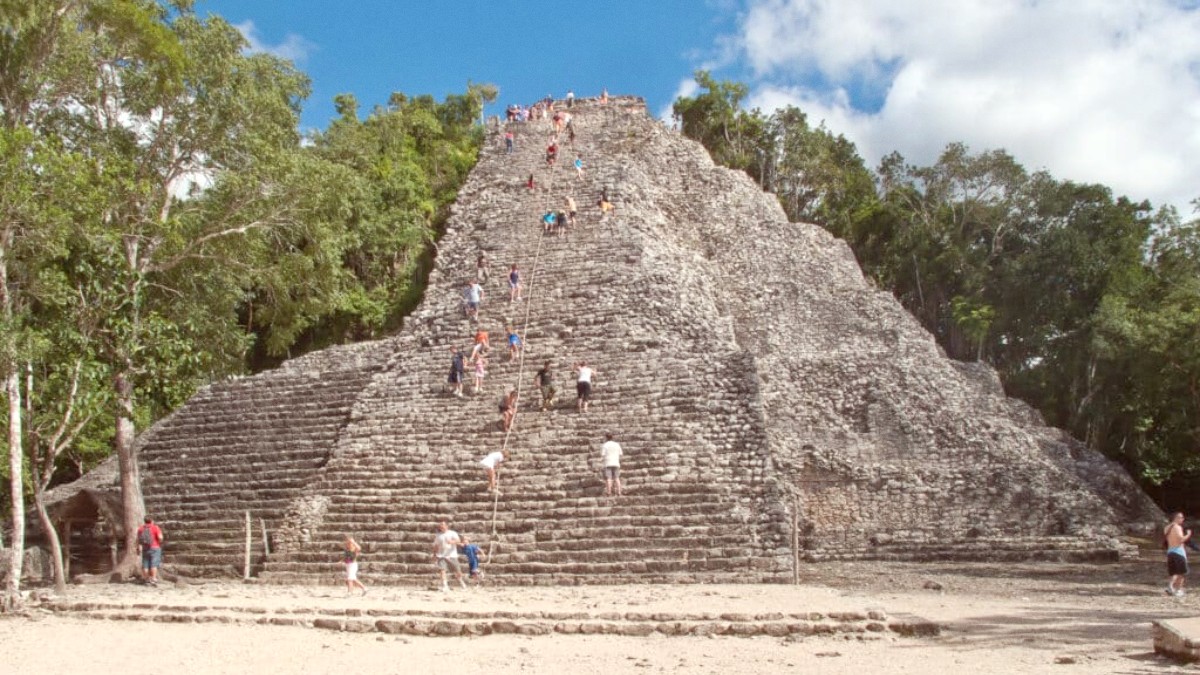
Yucatan Peninsula, Mexico
Embrace the natural environment with activities that span land and water, from exploring ancient paths to refreshing swims.
Paths are generally flat but can be uneven. Comfortable walking shoes are required.
Renting bicycles at the Coba ruins entrance is a popular way to explore. Designated paths (sacbes) suit cycling, allowing efficient site coverage. It is an active and fun way to experience the archaeological zone.
Look for local wildlife while exploring Coba ruins and surrounding jungle. Spider monkeys are often seen in trees near the ruins. Early morning visits increase chances of spotting active wildlife.
Always shower before entering cenotes. This helps protect the delicate ecosystem from sunscreens and body oils.
Coba presents direct opportunities to immerse yourself in ancient and contemporary Mayan culture.
A community-run experience that includes traditional Mayan ceremonies, providing a glimpse into ancient spiritual practices. It supports the local economy directly.
It provides a contrast to the ancient grandeur of the ruins.
Engage with friendly residents and discover local handicrafts for an authentic cultural exchange.
Find traditional Mayan handicrafts made from local materials in small shops and stalls near the ruins.
While most locals speak Spanish, you may hear Yucatec Maya, the traditional language, offering a cultural immersion.
If your visit aligns, local festivals in Coba village or nearby towns can showcase traditional music, dance, and food.
While Coba itself focuses on archaeological exploration, its natural elements contribute to relaxation. For more extensive wellness experiences, nearby Tulum offers abundant options.
Coba village has no formal spas or wellness centers. For extensive spa treatments, visitors travel to nearby Tulum.
Tulum has a well-established reputation as a wellness destination, offering a wide array of options from luxurious resort spas to rustic yoga shalas and meditation retreats.
Many establishments in Tulum specialize in holistic wellness, combining ancient practices with modern relaxation techniques.
Coba village offers a quiet, traditional experience. It has virtually no formal nightlife or entertainment beyond quiet local eateries serving dinner. After the archaeological site closes, the village becomes very peaceful.
Most visitors return to their accommodations in Tulum or other coastal towns for nightlife. Tulum presents a range of options, from relaxed bars and lively restaurants to some clubs, especially in the town center (pueblo) and the beach zone.
In Tulum, you can find live music, DJ sets, and a more energetic atmosphere. Options cater to various tastes, from laid-back beach bars to more energetic venues.
Small shops and stalls are located near the Coba archaeological site entrance and throughout Coba village.
Purchase from local artisans and community initiatives directly. This ensures your money supports the local economy and creators. Be wary of mass-produced items.
Look for unique, handcrafted pieces rather than generic souvenirs. Inquire about the origin of materials or the artisan who made the piece.
For larger purchases, ask about shipping options from the vendor. Be aware of your home country's customs regulations and limits, especially for agricultural products or protected materials. Keep receipts.
Consider handmade items for lasting memories.